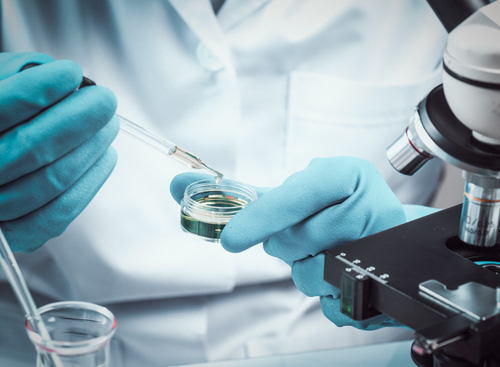Cell Therapy for RDEB Needs Collagen VII Repair in Two Types Skin Cells to Achieve Stability, Study Finds

Cell therapy with genetically engineered skin grafts requires that collagen type VII be “corrected” in two types of skin cells — keratinocytes and fibroblasts — to be effective against recessive dystrophic epidermolysis bullosa (RDEB), a study in mice has found.
Researchers saw that only skin models made of collagen VII-producing human keratinocytes and fibroblasts formed normal anchoring fibrils and prevented blistering in mice.
Their study, “Collagen VII Expression is Required in Both Keratinocytes and Fibroblasts for Anchoring Fibril Formation in Bilayer Engineered Skin Substitutes,” was published in the journal Cell Transplantation.
Dystrophic epidermolysis bullosa (DEB) is caused by mutations in the gene COL7A1, with subsequent defects in the production of a working collagen VII.
This type of collagen is produced both by keratinocytes (protective skin cells) in the epidermis or outermost skin layer, and by fibroblasts (connective tissue cells) in the dermis or deeper skin layer. Collagen VII is produced and secreted outside cells to form anchoring fibrils that are vital to the epidermis attaching to the dermis.
Due to a deficiency in collagen VII, people with DEB lack functional anchoring fibrils. As a result, their skin is fragile and easily shears and blisters.
DEB can be inherited in a recessive or dominant manner, with the recessive form (RDEB) usually more severe and carrying a greater risk of developing squamous cell carcinoma (an aggressive type of skin cancer). No cure or effective treatments are available beyond management of symptoms.
Different cell and gene therapies have been proposed. A recent clinical trial (NCT01263379) tested a gene therapy approach in which patients’ own (autologous) keratinocytes were genetically corrected to produce working collagen VII, grown into cell sheets, and transplanted onto patient’s wounds. These skin grafts are known as cultured epithelial autografts (CEA).
This strategy worked to restore collagen and improve healing in the first months, but failed to maintain stable healing in the long-term. Scientists believe this happened because grafts only had keratinocytes, and not fibroblasts, producing collagen VII.
They proposed optimizing this gene therapy by using dermal-epidermal skin substitutes made of a top layer of epidermal keratinocytes and a deeper layer of dermal fibroblasts, both engineered with a functional COL7A1 gene.
Such a skin-like bilayer — called an engineered skin substitute (ESS) — was seen in previous studies to provide stable, long-term wound closure for burn patients. This skin model also allows communication between adjacent cells to promote rapid tissue maturation; for this reason, the researchers expected it would enable the formation of anchoring fibrils.
To investigate ESS as a gene therapy for RDEB, the researchers tested how well different combinations of bilayer skin substitutes healed wounds in immunodeficient mice and prevented blistering.
Scientists wanted to see if collagen VII production was required in both layers (keratinocytes and fibroblasts), or if its expression in one layer would be enough to support formation of anchoring fibrils and avoid blistering.
“If this were the case, it could greatly simplify cutaneous gene therapy efforts, requiring genetic modification of only fibroblasts or keratinocytes,” the researchers wrote.
To test this, ESS were prepared using four combinations of cells: RDEB fibroblasts plus RDEB keratinocytes; RDEB fibroblasts plus healthy keratinocytes; healthy fibroblasts plus RDEB keratinocytes; and healthy fibroblasts plus healthy keratinocytes.
Cells were obtained from skin biopsies of a 24-year-old RDEB patient and a healthy patient of the same age undergoing plastic surgery. ESS models were grown on special cotton pads in the lab prior to grafting onto full-thickness wounds in mice.
As expected in bilayers made of RDEB cells only, collagen VII was undetectable and mice developed the most severe blisters after the grafting.
In contrast, at two-to-three weeks after grafting, high levels of collagen were restored in skin substitutes made of a mix of healthy and RDEB cells. Mice receiving these grafts had less blistering compared to skin substitutes made of RDEB cells only.
Under a high-resolution microscope, however, normal-shaped anchoring fibrils were visible only in bilayers exclusively made of healthy cells — which did not cause any blistering in mice.
“The results suggest that although COL7 [type VII collagen] protein is produced in engineered skin when cells in only one layer express the COL7 gene, formation of structurally normal anchoring fibrils appears to require expression of COL7 in both dermal fibroblasts and epidermal keratinocytes,” the researchers concluded.






